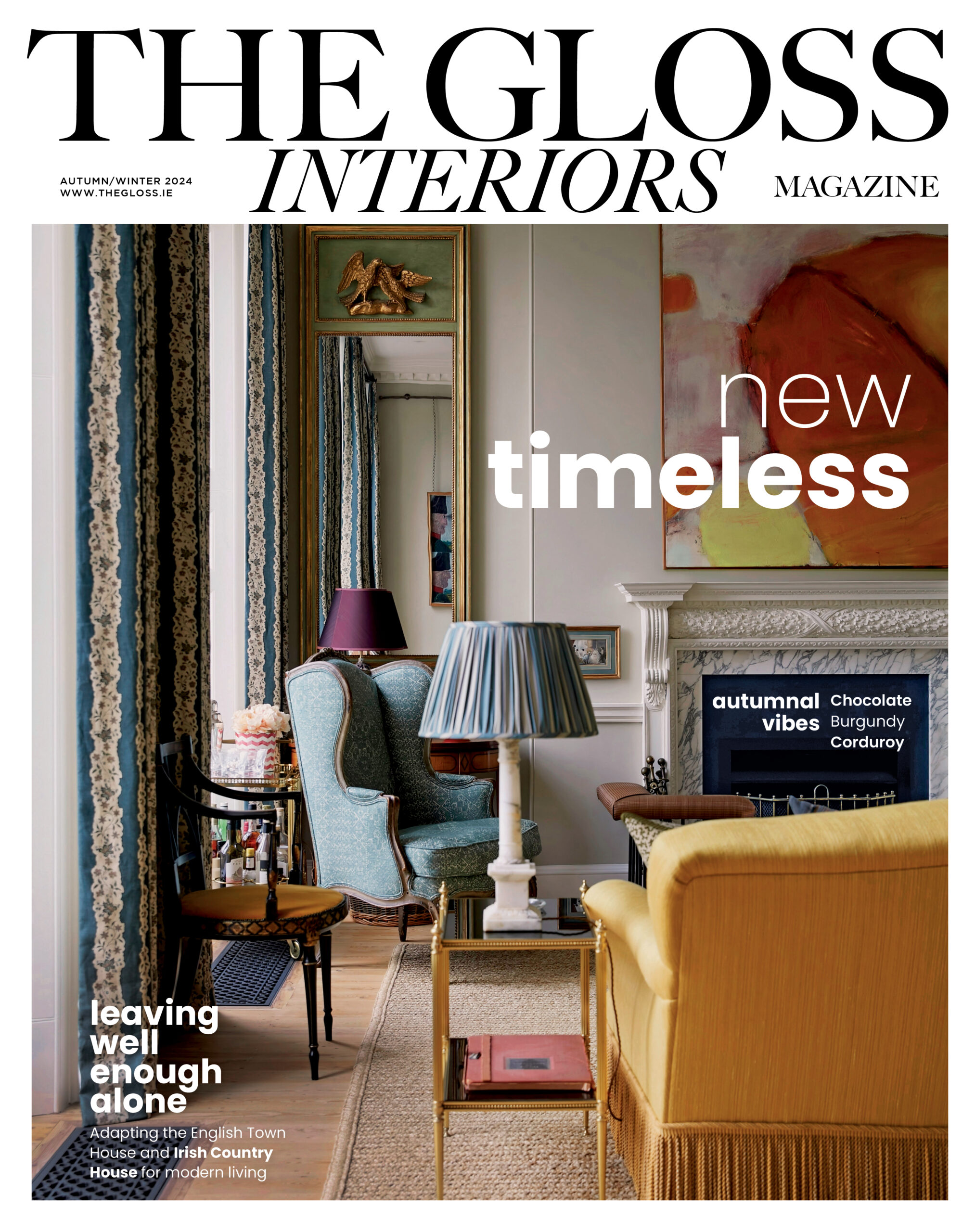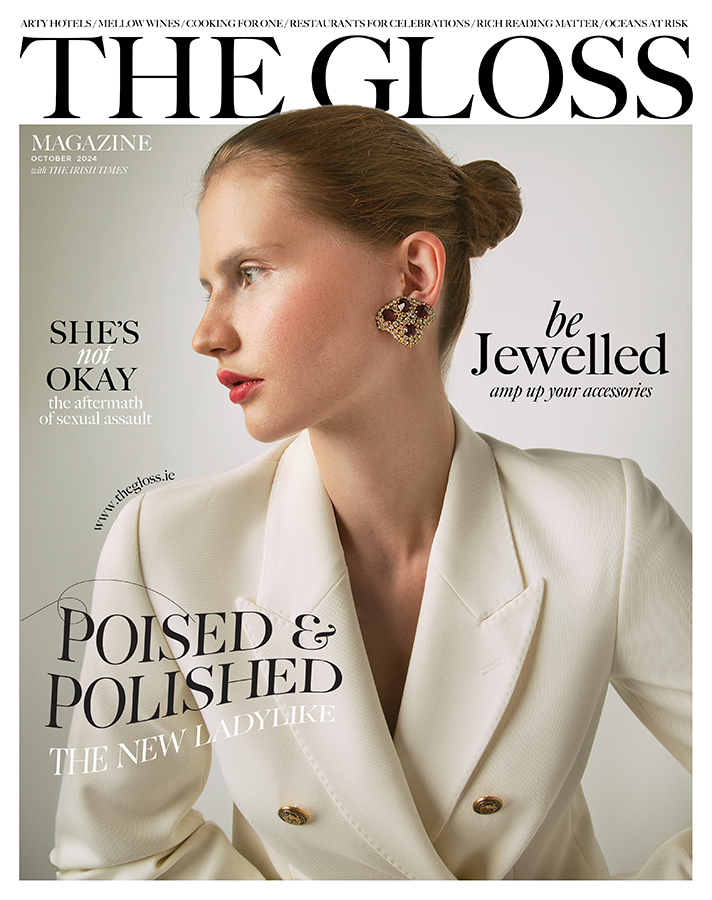Like Lena Dunham and Northern Irish politician Naomi Long, JEANNE SUTTON suffers from ENDOMETRIOSIS. Although it has NO KNOWN CURE, she hasn’t let its diagnosis define her …

Illustration by Lauren Rebbeck
In 2011 I passed out from pain. I like to remind myself of that. Doesn’t it lend me certain steeliness? Or maybe it suggests weakness. This verging-on-30 woman gives up easily. A gust of a challenge and she bends.
For a body to shut down so it can devote itself to unconscious pulsing and burning is notable. There are before and afters throughout our lives and one of mine is when I blew my physical filament.
When I came to on a rough carpet, I made my way to a nearby health clinic. I was living in Canada and had legally required health insurance. I think it was snowing that day. I walked pitching forward.
The doctors I saw in the ensuing weeks suspected I had a condition called endometriosis. I wasn’t dumbfounded at the syllables – a few months previously, on a bus to the miserable city of Niagara Falls, I did a quiz in Cosmopolitan magazine that suggested I might have it. I didn’t follow up on that diagnosis.
Endometriosis has no cure. Tissue similar to that in the uterus is found outside the womb in areas such as the pelvis, on the bowel, bladder, between the bowel and womb. These cells form lesions that respond to hormonal stimulation. They can become inflamed. That’s a polite way to say that endo, as it’s known, causes pain, occasionally or all the time, but especially around your period. You might have pain during penetrative sex. Bowel movements can hurt. Do you remember learning in biology about how every month your womb sheds its lining? Endo lesions can bleed then too, but that blood has no tampon or pad to go to. The disease is also associated with fatigue and infertility. Most women with endo will conceive naturally, although many only discover they’re afflicted when attempts to become pregnant meet a roadblock. My boyfriend and I have been together six years. I blurted out I had endo on our first date, like an honest wheeler-dealer. He still kissed me at a bus stop.
It’s sad I was apologising from the get-go. That’s what the mothering narrative was doing to me. I have learned to emotionally distance myself from it. Still, endo has pushed me into a pre-emptive role with other women. They assuage me, unprompted, with mentions of relatives who managed to have kids. It’s benevolent pity. They talk about how all women’s lives can have meaning. Be an aunt. Adopt. It’s funny how feminine meaning always involves being a satellite. I don’t think mothers believe me when I say I’ll probably be okay, eventually, if I can’t conceive.
Last year, University of Sydney got Twitter flack for announcing a research project exploring men’s emotions around their partner’s endometriosis. How does causing pain during sex affect a man? It was labelled anti-women by some commentators. That’s a misguided slap of a reaction. Having a supportive relationship with endo is tough. We should talk more about the challenges. It would be a pity to let love wilt because emotions were suppressed.
It’s estimated that one in ten women has endometriosis. That’s 176 million worldwide, up to 155,000 in Ireland. No one knows what causes it. Some suggest it’s present from embryological development, that we are born with the lesions and an event like puberty triggers symptoms.
The Canadian doctors told me I would need surgery to confirm my diagnosis; I had a laparoscopy in the Coombe in late 2011. My belly button still has a little silver knotted scar. The skin above my left ovary, where they found endo and lasered it off, shone for a few years. It has since faded, only I can divine it. I’ve not been sliced open since.
I was diagnosed at 22, which is considered early. If you have endometriosis or know someone with it you’re forgiven if that sparks envy. I feel guilty about and thankful for the ease of my diagnosis. In general, women wait an average of nine years for confirmation. They combat distrust, gaslighting, ignorance. They’re told to get used to crippling pain and cancelling life every four weeks.
It’s a buzzy condition. In February, 31-year-old actress and director Lena Dunham demanded her medical team remove her uterus after months of intense pain. Various specialists came out to say a hysterectomy isn’t a cure for endometriosis. It was considered a solution years ago, but as experts point out, endo grows outside the womb. Promoting hysterectomy as a treatment could set public misunderstanding back a few years. Dunham stressed the surgery was her complex choice.
Professor Andrew Horne is a professor of gynaecology and reproductive sciences at the University of Edinburgh. He notes that headlines haven’t necessarily meant more research investment. “Historically, endometriosis has received little funding because it only affects women and there remains a gender bias in research,” he points out, adding its status as an invisible chronic pain condition also obscures the equation.
My life after diagnosis hasn’t been terrible – some women are incapacitated. I’m lucky the typical hormonal treatment suits me. I take the pill back-to-back because in 2013 a five-week period left me visibly grey. I was depleted of iron and my GP said I couldn’t go on like this. It’s important to note the pill doesn’t stall endometriosis.
Last summer, when my luggage containing my pill went missing on the way to Pittsburgh I cried in the arrivals lounge. An Icelandic woman on the same trip comforted me and started laughing when she realised she could help. She had endo and spotted me some medication. That’s how common this condition is.
My main symptom is fatigue. My body feels like a magnet to anything resembling a mattress, in a really unsexy way. I don’t go out “out”. I can’t tell you the last time I was in a club. At 28, my lack of a social life has me paranoid, but also nearly certain I’ve been labelled a miserable killjoy.
Then there are solutions. Living with endo in 2018 is to exist amid a wellness swamp. Try as one might follow a medicalised North Star, there’s a bayou of bullshit to wade through. One day soy is the devil, the next day you should get into pineapples. Sometimes dedicated Instagram accounts can be a stew of self-pity and bad advice, empathetic mass hugs at others.
Australia is leading the way in standing up to endo. In December, the government announced a National Health Action Plan and apologised to the estimated 600,000 Australian women with the condition.
There are glimpses of medical hope. Professor Horne’s research investigates how cancer drugs affect endometriosis. With previous support from Wellbeing of Women, his team has shown endo lesions appear to use mechanisms very similar to cancer cells to grow. They found that pelvic cells from women with endometriosis produce excess lactate. Lactate is also found in tumour cells in cancer. The team decided to see if using anti-cancer drugs in small doses could affect the endometriosis. Here’s the super-exciting part, it might.
Horne’s team believes a cancer drug, dichloroacetate (DCA), which targets lactate production, secretion or uptake, could halt the production of lactate in pelvic cells. It may even prevent the growth of endometriosis cells. “Our most recent results to date are encouraging,” Horne says of the tests performed on mice. “They show that DCA reduces glycolysis and lactate production in endometrial cells and a DCA-related compound reduces lactate uptake by endometrial cells.” The results are positive and also show that bodyweight doses of DCA should be well tolerated. Horne and his team are currently seeking funding to trial small doses of DCA in women with endometriosis.
Besides all that potentially life-changing work, Horne is helping fundraise. Alongside Carol Pearson, he’s authored Endometriosis: The Experts’ Guide to Treat, Manage and Live Well with Your Symptoms. They’re donating royalties to Endometriosis UK.
There’s a line in Susan Elizabeth Philip’s novel Call Me Irresistible where one character warns another “I think that how you act in the next few minutes will dictate the person you’re going to be from now on.” Was my fainting spell a reset button for my body as it welcomed this uneven but constant state? I don’t hate my endometriosis. From the moment a doctor told me I had mechanical problems, I accepted it. Maybe I’m a weak bystander in my own life.
My GP and I suspect my endo is getting worse and may require another surgical intervention. Listen, I got dealt no kings. But I think how I’m taking this on the chin is helping me be the person I’m meant to be.
Jeanne Sutton a writer based in Dublin. www.jeannesutton.ie. For more information, see www.endometriosis.ie.
Love THEGLOSS.ie? Sign up to our MAILING LIST now for a roundup of the latest fashion, beauty, interiors and entertaining news from THE GLOSS MAGAZINE’s daily dispatches.





